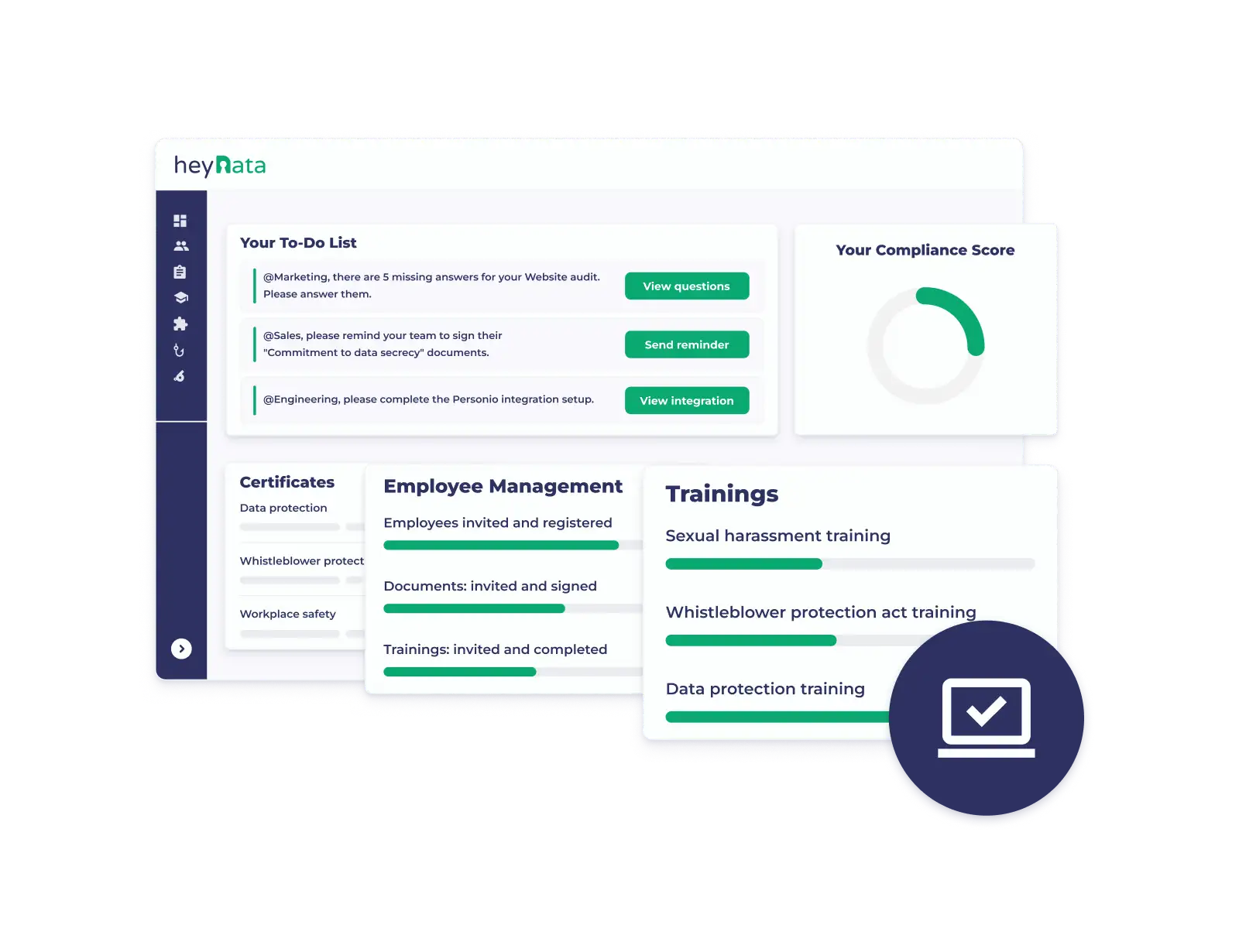Table of contents

What is a Data Breach?
A data breach is the unauthorized access, loss, or disclosure of personal data. Breaches can result from technical failures, cyberattacks, or human error.
Immediate Actions in the Event of a Data Breach
01
Identify the Incident
Determine which data is affected and how the breach occurred.
02
Contain the Problem
Take appropriate measures to prevent further data loss.
03
Internal Notification and Crisis Management
Inform relevant departments (management, IT, legal).
04
Implement Initial Security Measures
Secure data and document the incident for further analysis.
GDPR Reporting Obligations
GDPR Requirements
Obligations & Consequences
Deadline
Notification to the data protection authority within 72 hours
Companies must set up processes for rapid identification and reporting to avoid legal consequences.
Affected party
Informing data subjects is necessary if there is a high risk to their rights
A lack of information can lead to reputational damage and a loss of trust
Notification content
The report must include the nature of the incident, the data concerned, and the measures taken
Companies must clearly define responsibilities to avoid fines of up to 20 million euros or 4% of annual turnover.
Impact of a Data Breach on Individuals
Potential damages for affected individuals:
- Material damage – Fraud or financial loss from stolen banking data.
- Non-material damage – Exposure of sensitive information like health data or political opinions.
- Identity theft – Combination of data enabling criminal misuse.
- Large-scale impact – The more people affected, the higher the risk of significant consequences.
Company obligations:
- Immediate investigation of the data breach and root cause analysis.
- Notify affected individuals if legally required.
- Implement long-term security measures to prevent recurrence.
How to Follow Up After a Data Breach
1
Collect all relevant data
Time and nature of the incident Affected systems and personal data Initial containment measures
2
Document communication and reporting
Exchanges with supervisory authorities and affected individuals Evidence of timely, GDPR-compliant reporting
3
Record preventive actions
Improvements to security systems Updates to processes and employee training

Required Documentation of a Data Breach
Every data breach must be thoroughly documented for internal review and to comply with GDPR. This documentation protects your business from legal consequences and helps prevent future incidents.
Key documentation includes:
- Date, time, and nature of the breach
- Affected systems and personal data
- Containment measures taken
- Communication with authorities and affected parties
- Security measures implemented to prevent future breaches

heyData – Your Partner for Data Protection and Compliance
Data breaches cannot always be prevented – but with the right measures, you can minimize risks and ensure GDPR compliance. Companies that invest in data protection early not only protect their operations but also strengthen customer trust.
heyData supports you with digital solutions, employee training, and tailored advice for secure and legally compliant data processing.
Secure your business and stay compliant – with heyData
Request a ConsultationFAQ
According to Article 4 - number 12 - of the General Data Protection Regulation, a data breach is a breach of security that accidentally or unlawfully results in the destruction, loss, alteration, unauthorised disclosure of or access to personal data.
Identifying a data breach can be complex. Signs may include unusual system activity, reports of stolen or lost devices, or unexplained data loss. According to Article 33 paragraph 1 of the GDPR, regular monitoring is required to identify such incidents.
According to Article 33 paragraph 1 of the General Data Protection Regulation, if you discover a data breach, you must notify the competent data protection authority without undue delay and, where possible, within 72 hours of becoming aware of the breach. This should include mitigation measures such as changing passwords or blocking access.
Failure to report a data breach can result in significant fines under Article 83 of the GDPR. These can be up to €20 million or up to 4% of annual global turnover, whichever is higher.
As an affected person, you have first and foremost the right to be informed of the data breach in accordance with Article 34 of the GDPR, as well as the right to lodge a complaint with the competent data protection authority in accordance with Article 77 of the GDPR. Finally, you may also be entitled to financial compensation.



